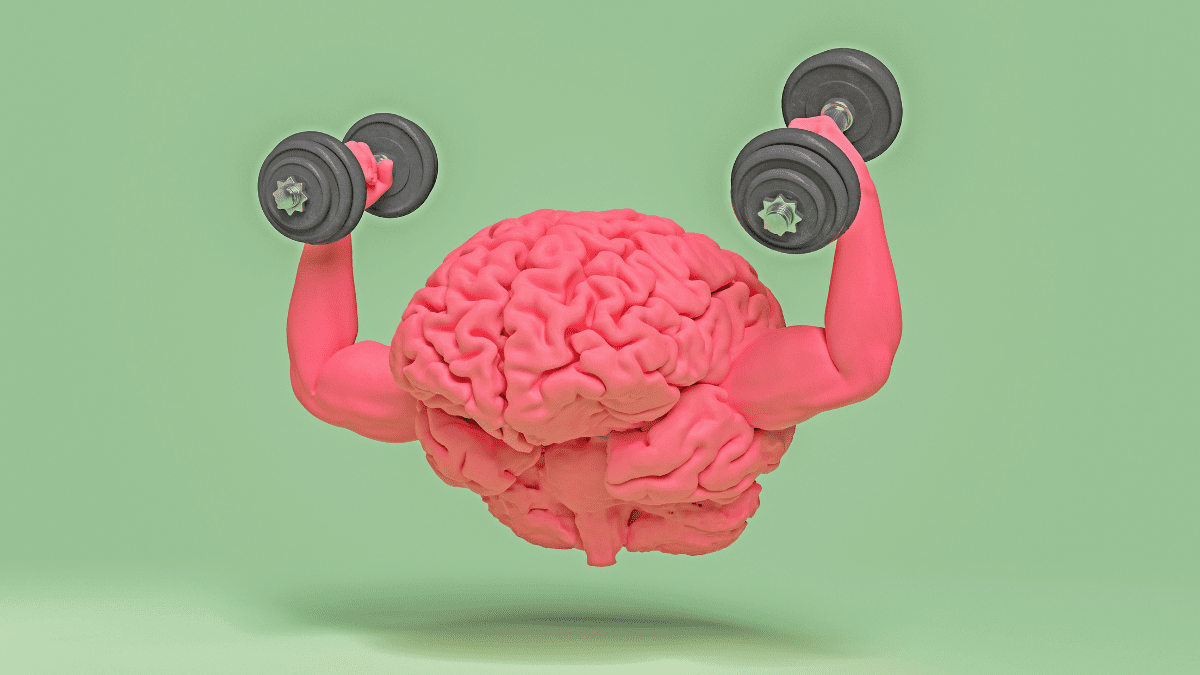How to Use ChatGPT for Mental Health Support
ChatGPT for mental health gives you a powerful, judgment-free space to vent, reflect, and heal—whenever you need it. No shame. Just support. Always available.

In This Article
- Can ChatGPT for Mental Health Really Help You Heal?
- How ChatGPT for Mental Health Offers Safe, Judgment-Free Support
- The Science Behind Using ChatGPT for Mental Health
- Using ChatGPT for Mental Health: Practical Ways to Get Started
- Limitations of ChatGPT for Mental Health Support
- Conclusion: Is ChatGPT the Future of Mental Health Conversations?
- ChatGPT for Mental Health — FAQ
Can ChatGPT for Mental Health Really Help You Heal?
More people than ever are turning to technology for emotional support. Yet many still fear judgment when opening up—even to professionals. That’s where ChatGPT for mental health comes in. It’s an AI tool offering a safe space to express yourself without fear, shame, or pressure.
This shift matters. Mental health support should be accessible, private, and available when you need it most. ChatGPT creates that space. It listens without interruption, reacts without bias, and helps you reflect more clearly on your feelings.
In this article, you’ll learn how ChatGPT offers a powerful new way to explore your emotions. You’ll discover practical ways to use it, what science says about its effectiveness, and where its limits lie. If you’re curious how AI fits into your wellness journey, start here: AI for Mental Health: The Truth No One Tells You.
Ready to find out if this tech-driven support system could work for you? Let’s explore.
How ChatGPT for Mental Health Offers Safe, Judgment-Free Support
What makes ChatGPT a non-judgmental space?
Talking to someone about your feelings can feel risky. Fear of being judged often keeps people silent. But ChatGPT removes that fear entirely.
It doesn’t have opinions, biases, or personal reactions. Instead, it gives you space to express yourself freely. No shame. No interruptions. Just calm, thoughtful responses that meet you where you are.
One reason this matters? Stigma. Fear of being misunderstood or labeled keeps many from speaking out. Studies show that stigma directly prevents people from seeking help. You can read more about that on Healthline’s breakdown of mental health stigma.
With ChatGPT, there’s no audience, no pressure, and no fear of saying the wrong thing. That alone can be healing.
Why do people trust AI with personal emotions?
It may seem strange at first. After all, ChatGPT isn’t human. But that’s the point. When you remove human judgment, something interesting happens: people open up more.
Users describe feeling less ashamed when they share thoughts with ChatGPT. They can be honest without fear of being corrected or criticized. That emotional safety builds trust—especially for those hesitant to talk to others.
This isn’t just about privacy. It’s about relief. Emotional freedom. And that matters more than ever in a world where mental health help still feels out of reach for many.
You’ll find more on how people seek digital emotional support through trusted sources like Verywell Mind’s mental health resource page: verywellmind.com/mental-health-resources-4843380.
Can ChatGPT for mental health understand how you feel?
Not entirely—but it comes closer than you’d expect. While it doesn’t feel, ChatGPT does recognize emotional cues. It mirrors language, tone, and reflection.
That’s the foundation of active listening, something long praised by mental health professionals. Mindful.org explains that being deeply heard—without judgment—can reduce stress and promote healing. ChatGPT replicates this technique. And that can make someone feel seen and supported.
AI isn’t a substitute for therapy. But it provides something real: a safe, private space to explore your thoughts with clarity and care.
The Science Behind Using ChatGPT for Mental Health
Is there any psychological benefit to AI conversations?
Surprisingly, yes. While ChatGPT isn’t a therapist, it can mimic the therapeutic benefits of writing and reflection. One example is venting. When you type your thoughts, you’re also processing them. That alone can reduce anxiety.
Another benefit is reframing. ChatGPT can help you see a situation from a new angle. This mirrors a core principle in cognitive behavioral therapy—known to shift negative thinking patterns.
Also, emotional labeling—naming what you feel—has proven effects on regulation and mood. According to Psychology Today, simply putting feelings into words reduces their intensity. ChatGPT supports that process in real time. It encourages mindfulness through thoughtful language, even if it’s artificial.
If you’re new to this, the MindSolis ChatGPT for Mental Health Guide is a helpful way to begin. It offers curated prompts, emotional check-ins, and supportive conversation starters that make AI-based reflection easier and more meaningful.

What does research say about digital mental health tools?
Science is catching up with what many users already feel: digital support works—especially when it’s accessible and immediate. Tools like chatbots and AI companions have shown promise in reducing symptoms of depression, anxiety, and loneliness.
These platforms create space for self-guided exploration. People feel empowered when they reflect on their emotions at their own pace. That autonomy can be therapeutic by itself.
A growing body of studies supports this trend. You’ll find them on PositivePsychology.com, which dives deep into the effectiveness of digital mental wellness strategies. While not a replacement for clinical care, these tools offer meaningful help—especially for early-stage emotional challenges.
How does ChatGPT for mental health compare to other mental wellness apps?
There are many AI companions available today. Some focus on journaling. Others offer affirmations, mood tracking, or therapeutic check-ins. So how does ChatGPT fit in?
ChatGPT is more flexible. It doesn’t follow a rigid script. You can steer the conversation wherever you want. That freedom allows deeper reflection and spontaneity, unlike some structured wellness apps.
Apps like Wysa or Woebot use pre-programmed dialogue trees. They’re great for quick check-ins, but they can feel robotic. ChatGPT, however, adapts in real time. It follows your words with more nuance, which can make it feel more human.
This adaptability makes it stand out. You’re not just tapping buttons—you’re having a conversation that responds to your emotions, not just your answers.
Using ChatGPT for Mental Health: Practical Ways to Get Started
What can you ask ChatGPT about your mental health?
You don’t need the perfect words to start. Just begin with how you feel. ChatGPT can help you sort out your emotions, one message at a time.
Try prompts like “Why am I feeling so anxious today?” or “Help me process this argument.” These small openers can lead to powerful breakthroughs.
ChatGPT is also useful for exploring patterns. You might ask, “Why do I keep reacting this way?” or “What does this emotion mean?” These kinds of questions encourage self-reflection in a way that feels natural and non-judgmental.
If you’re unsure where to begin, MindSolis offers a structured guide with ready-to-use prompts designed to deepen your emotional insight. You can find it at mindsolis.gumroad.com/l/chatgpt-for-mental-health.
How can you set boundaries while using ChatGPT for support?
AI can be helpful—but it has limits. ChatGPT isn’t a licensed therapist. It doesn’t replace professional mental health care.
It’s important to use ChatGPT as a tool, not a cure. Know when your needs exceed what a chatbot can provide. For serious concerns—especially involving trauma or crisis—reach out to a licensed expert.
Setting a time limit on sessions also helps. Spending 10 to 20 minutes daily can be enough to center your thoughts without creating dependence.
Lastly, always follow up with human support when necessary. ChatGPT can guide, but it cannot diagnose or treat.
Should you journal with ChatGPT or use it for guided reflection?
Absolutely. Journaling with ChatGPT turns writing into a dialogue. You don’t just write—you get responses that help you unpack what’s underneath.
Daily emotional check-ins can help track your moods over time. Try asking, “What’s one good thing that happened today?” or “What’s weighing on my mind?” These prompts can shift your focus and bring clarity.
Mayo Clinic highlights the benefits of emotional journaling for stress relief and resilience. Combining that with AI-driven reflection adds a new dimension. It’s like having a digital thought partner that never tires or judges.
Start simple. Keep it honest. Over time, it becomes a powerful mental wellness habit.
Limitations of ChatGPT for Mental Health Support
When is ChatGPT not enough?
ChatGPT can be supportive. But it has limits. It cannot offer medical advice or replace therapy.
If you’re facing a crisis, ChatGPT won’t know how to respond appropriately. In those moments, human support is essential. Always contact a licensed mental health professional or use an emergency hotline.
Also, if you’re dealing with trauma, addiction, or persistent suicidal thoughts, professional care is the only safe path forward. AI tools are not trained for those complexities.
Think of ChatGPT as a first step—not the whole journey. It’s great for reflection, but it’s not equipped for deep healing work.
Can ChatGPT for mental health reinforce negative thinking?
Yes, in some cases. Because ChatGPT mirrors language, it can unintentionally reflect or validate negative thought patterns.
For example, if you’re spiraling into self-blame, it might repeat those words back to you. Not because it agrees—but because it’s following your lead. This can sometimes deepen negative loops.
That’s why it’s important to check in with yourself. If a conversation leaves you feeling worse, pause. Reframe the prompt. Or take a break. AI doesn’t always get emotional nuance right.
Mindvalley discusses the ethical limits of AI in wellness. They point out that without emotional awareness, tools like ChatGPT can sometimes misguide users. Staying mindful of that risk is part of using the tool responsibly.
How can you combine ChatGPT with traditional therapy?
You don’t have to choose one or the other. In fact, using ChatGPT alongside therapy can improve self-awareness and help you prepare for sessions.
Try using it to journal before appointments. You might bring insights from your conversations into therapy. This helps you dig deeper, faster.
Therapists are also becoming more open to tech-assisted reflection. Many clients now arrive with AI-powered notes, mood trackers, or digital thought logs. When used wisely, ChatGPT can enhance—not replace—the therapeutic process.
It’s about integration. Let the tool support your healing, while your therapist guides it.

Conclusion: Is ChatGPT the Future of Mental Health Conversations?
ChatGPT is not a therapist. But it can be a powerful support tool.
When used mindfully, it offers a space to reflect, release, and reset. Many people struggle to express their emotions. Yet ChatGPT makes it easier by removing fear and judgment.
It doesn’t ask for explanations. It doesn’t interrupt. Instead, it listens—anytime you need it. That alone can make someone feel seen.
However, it’s important to remember its limits. AI is not designed to handle crisis situations or replace professional help. For deep healing, therapy is still essential.
Still, ChatGPT can support your emotional growth. Whether you’re journaling, venting, or preparing for a therapy session, it can offer clarity. It creates consistency in moments when human support isn’t available.
And more importantly, it’s accessible. For those who feel isolated or overwhelmed, that accessibility can be life-changing.
So, is ChatGPT the future of mental health conversations? Not on its own. But it is part of a larger shift. A shift toward more open, tech-enhanced emotional care.
You have the power to choose how you heal. ChatGPT is just one path—and sometimes, that’s all you need to begin.
Keep exploring, keep asking and keep growing.
While AI cannot replace licensed professionals, it’s becoming a valuable complement to traditional therapy. In fact, recent findings highlight how tools like ChatGPT are helping users manage stress, explore emotions, and gain perspective in a non-judgmental space. According to Verywell Mind’s review on using ChatGPT for mental wellness, many people feel more comfortable opening up to a chatbot first—especially when fear of judgment is a barrier.
ChatGPT for Mental Health — FAQ
Can ChatGPT help with mental health issues?
Yes, it can support reflection, emotional awareness, and stress relief. However, it does not replace professional therapy or crisis care.
Is it safe to talk about personal emotions with ChatGPT?
Generally, yes. ChatGPT offers a private, judgment-free space. But always avoid sharing sensitive personal data.
How should I start using ChatGPT for mental health support?
Start with simple prompts like “Why am I feeling anxious?” or “What’s bothering me today?” Over time, it gets easier to open up.
Can ChatGPT replace a licensed therapist?
No. It can guide, support, and reflect—but it cannot diagnose or treat mental health conditions.
Is there a tool to help guide my ChatGPT conversations?
Yes. Try the MindSolis ChatGPT for Mental Health Guide for prompts and emotional check-ins: ChatGPT for Mental Health & Mindfulness: 111 Prompts for Healing, Clarity and Growth.







